NIR & UV-VIS Process
and Lab Analyzers
NIR UV-VIS process and lab analyzers (spectrometers)
Our GUIDED WAVE™ NIR UV-VIS process and lab analyzers (spectrometers) are powerful tools that can be used for both inline and at-line measurements. The NIR analyzers provide remote multi-channel extended range near-infrared (1000-2100 nm) spectroscopic analysis. The UV-VIS analyzers operate over a wavelength range of 200 – 850 nm. In addition, our analyzers offer excellent signal-to-noise ratio, wavelength stability, NIST traceable wavelength calibration, dual beam optics, and built-in diagnostics. These features make it easy for process engineers, operators, and researchers to monitor up to 12 process streams or sample interface points within a stream with accuracy, repeatability, and reliability.
OUR NIR UV-VIS process and lab analyzer spectrometer SOLUTIONS
APPLICATION SUPPORT
We offer many high performance, affordable, turnkey solutions for your application. Click here
Looking for a specific application not listed, or need help? Contact us today.
FLOW CELLS & PROBES
Customized, innovative probes and flow cells designed to meet your specific process and safety needs.
What is pathlength and why is it important when selecting a sample interface? Click to learn more
USEFUL NIR UV-VIS Troubleshooting Guides & Technical Resources
APPLICATIONS
Below are a few examples of our process analysis solutions, which can be customized to suit your unique application.
APPLICATIONS FOR NIR UV-VIS PROCESS AND LAB ANALYZERS
| Key Word | Industry | Application Title | Description |
|---|---|---|---|
| Acetonitrile | Pharmaceutical | Monitoring Reverse Phase LC of Acetonitrile/Water in Pharma Applications | A ClearView db Photometer was used to monitor the Acetonitrile (ACN):water mobile phase gradients for the chromatographic separation of active Pharmaceutical ingredients. |
| Acrolein | Chemical | Safe and Efficient Control of the Acrolein Process | Acrolein (or propenal) is the simplest unsaturated aldehyde. It is a colorless liquid and is mainly used as a biocide or as a building block to other chemical compounds. Measurement of both the water and acetaldehyde concentration in the final product is required. Acrolein is toxic and, without online analysis, hazardous manual sampling will be needed. Near-infrared spectroscopy can provide rapid, real-time, in-situ analysis of the Acrolein cross-linking process. |
| APHA Color (ASTM D1209) | Petroleum | On-Line Monitoring of APHA Color | APHA is sometimes referred to as the Platinum- Cobalt (Pt/Co) or Hazen scale. Also referred to as a yellowness index, the APHA color scale is a common method of comparison of the intensity of yellow-tinted samples to assess the quality of liquids that are clear to yellowish in color. Discover how real-time monitoring of APHA color either on-line or in a laboratory setting using a photometer can improve your process. |
| Aromatics in Gasoline | Petroleum | Monitoring the Percent Aromatics in Gasoline by NIR | The aromatic content of gasoline determines many of its combustion properties. Since it also impacts the environmental characteristics of the fuel it is desirable to have accurate measurements of this parameter. The traditional analytical method for measuring aromatics is either gas chromatography (GC) or an older method entitled fluorescent indicator adsorption (FIA), both of which are time and labor intensive. Learn how GUIDED WAVE hardware and software can provide real-time measurement of % aromatics in fuel products using fiber optic-based, Near-Infrared (NIR) spectroscopy. |
| ASTM Color D1500, D1524 | Petroleum | On-line Monitoring of ASTM Color (0-7) | ASTM color (reference ASTM D1500, ASTM D1524) describes the color measurement method for fuels including lubricating oils, heating oils, diesel fuels, and petroleum waxes. The lowest value of 0.5 being a light yellow, 2 being yellow, 5 being orange, and 8 being a deep red. ASTM color is an important product quality measurement for many refinery and petrochemical processes. |
| Benzene | Petroleum | Benzene in Gasoline | The NIR spectra of a group of 150 different process gasoline samples with known benzene concentration ranging from 0.2 to 6.0% were measured between 1000 and 1600 nm using a GUIDED WAVE NIR Spectrometer. NIR is a time and money saving alternative to traditional methods. |
| Benzotriazole | Semiconductor | Automated Monitoring of Benzotriazole Contamination For the Semiconductor Industry | Benzotriazoles have many uses. They can be used in the semiconductor industry in wafer cleaning, an anti-freeze ingredient for de-icing airplanes, in photographic developing baths, as a corrosion inhibitor for copper and bronze, a UV stabilizer in some plastics, and as a precursor for many pharmaceutical compounds. Though benzotriazoles are readily water-soluble they are not significantly biodegradable or readily removed by common water treatment methods. UV spectroscopy is a useful method for online monitoring of wastewater for benzotriazoles contamination. |
| Binary Solvent Feed Mixtures for LC | Pharmaceutical | Binary Solvent Mixtures for High-Performance Liquid Chromatography | Discover the comprehensive analytics capabilities of NIR for ensuring proper mixture ratios of analyte samples being injected into HPLC columns. The correct mixture ratio ensures efficient and correct separation of the chemical targeted for separation in pharmaceutical applications. |
| Caustic and Carbonate | Chemical | On-Line Monitoring of Caustic and Carbonate | Learn about the simultaneous measurement of caustic (NaOH) and sodium carbonate in aqueous process streams, particularly at low (<2%) caustic concentrations, using a ClearView db NIR photometer and fiber optic probe. |
| Caustics in Water | Chemical | Caustic in Water with a ClearView db Filter Photometer | Measuring NaOH concentration in water on-line with the ClearView db filter photometer and a fiber optic flow cell in a slip stream. |
| Caustic in Water in Varying Temperatures | Chemical | Caustic in Water in Varing Temperatures | This data has shown the determination of caustic concentration in water in the presence of normal process interferents over a typical measurement temperature range. The impact of temperature is minimized, and measurement accuracy preserved. |
| Cetane Number | Petroleum | Cetane Number of Diesel Fuels | The Cetane number of a diesel fuel is a measure of the ignition properties and is an important specification that must be met during fuel production. The traditional laboratory method for Cetane number determination is the knock engine method in which the fuel is burned and its combustion characteristics compared to known standards. This method is time and labor intensive, and provides no ability for real-time control of production. This note discusses the use of our GUIDED WAVE hardware and software for the measurement of Cetane number in diesel fuel using fiber optic-based, Near-Infrared (NIR) spectroscopy. |
| Cleaning Solutions | Semiconductor | Monitor Cleaning Solutions in Semiconductor Wafer Manufacturing Process | One major challenge in operating wet chemical cleaning processes is maintaining optimal bath conditions required for uniform cleaning, reduced cycle times and minimal product rework. As an added benefit, accurate analysis of bath conditions makes the most efficient use of costly ultra-pure chemicals, and reduces chemical waste. Learn how a ClearView db photometer can be used to Monitor Cleaning Solutions in Semiconductor Wafer Manufacturing Processes. |
| Cloud Point of Diesel | Petroleum | Cloud Point of Diesel Fuel | The Cloud Point of a diesel fuel is the temperature below which wax forms giving the fuel a cloudy appearance. This parameter is an important property of the fuel since the presence of solidified waxes can clog filters and negatively impact engine performance. The traditional laboratory methods for the measurement of Cloud Point are optical in nature, but rely on cooling the fuel for the wax formation to occur. Our GUIDED WAVE NIR instrumentation can measure composition changes in the fuel that will be directly related to the wax formation and hence the Cloud Point. |
| Color in Refined Fuels | Petrochemical | Color in Refined Fuels (Measurement of Color) | Changes in color can be an indicator of product quality as well as a means to control process variables when implemented in real-time. Several different color “scales” are utilized in measuring color in different products or industries, such as, ASTM color, Saybolt, and APHA (aka Platinum-Cobalt, or Hazen). Each color measurement is described along with a method summary and suitable GUIDED WAVE analyzer configuration |
| Color of LNG (Saybolt) ASTM D156, D6045 | Petrochemical | Detecting Various Levels of Color of LNG with High Accuracy per ASTM Method D156, D6045 | A GUIDED WAVE Saybolt Color Analyzer System was fully implemented for real-time color measurement of various grades of LNG (liquefied natural gas) product with multiple specification requirements. Since the GUIDED WAVE customer required the measurement of various grades of LNG, they could not use just a go or no-go color analyzer. They needed to find an analyzer that was able to detect varying levels of color with a high degree of accuracy in accordance with ASTM D156 and ASTM D6045. |
| Ethylene Dichloride (EDC) Reactor | Chemical | Safe Operation of your EDC Reactor | Ethylene dichloride (EDC) plants need to monitor the ethylene content in the vent gas. By using Near Infrared Spectroscopy, the control systems can maintain a constant concentration in the vent gas and also ensure that the concentration is maintained at safe levels during start-up. |
| Epoxy Value | Chemical | On-Line Monitoring of Epoxy Value | Real-time monitoring of the Epoxy Value enables you to see into the reaction and monitor the epoxide group content and ensure that proper cross-linking is occurring. |
| Ethanol | Petroleum | Real-time Determination of Ethanol in Gasoline | Ethanol is now a common biofuel additive for gasoline. The additional oxygen in ethanol provides for a cleaner burning fuel. The data presented demonstrates the measurement of the ethanol content of fuel using near-infrared (NIR) spectroscopy. |
| Ethylene Oxide Sterilization (EO) | Sterilization and Virus Deactivation | On-Line Monitoring of Ethylene Oxide Sterilization | Near Infrared Spectroscopy provides real-time measurement of ethylene oxide (EO) gas during sterilization cycles. Ideal for use in sterilizer applications, this technology provides real-time results to ensure method compliance. |
| Fuel Identification for Pipelines | Petroleum | Continuous Fuel Identification for Pipelines | Reliable, affordable, real-time identification of petroleum products flowing in pipelines can enable terminals to identify the ideal time (t90) to switch to the correct storage vessel. This helps to minimize waste and the need for reprocessing petroleum products. |
| HPLC Binary Solvent Feed Mixtures | Chemical | Fast Online Analysis of HPLC Binary Solvent Feed Mixtures | Binary solvent mixtures are used as carriers in production scale pharmaceutical HPLC separations. Analysis of the mixture ratios is required prior to injection into the HPLC column. The correct mixture ratio ensures efficient and correct separation of the chemical targeted for separation. Learn how this can be achieved with NIR. |
| Hydrocarbon Gas Streams | Chemical | Online Monitoring of Hydrocarbon Gas Streams | A common concern of hydrocarbon vapors, especially in ambient air mixtures, is the concentration relative to the Lower Explosion Limit (LEL). GUIDED WAVE'S NIR instrumentation can make both qualitative and quantitative measurements in gas streams using long path gas cells coupled to our analyzer systems to monitor short-chain alkanes such as Butane. |
| Hydrogen Peroxide | Pharmaceutical | Online monitoring of Hydrogen Peroxide Sterilization | Our GUIDED WAVE HPV analyzer is a simple turnkey solution for the measurement of hydrogen peroxide and water (H202) concentrations in vapor phase. These are both measured together because they are codependent. The analyzer operates in real time, which takes the guesswork out of determining the H202 concentrations during cycle development and throughout the actual sterilization cycle. |
| Hydroxyl and Acid Numbers | Chemical | Hydroxyl and Acid Numbers in Resin Melts | Learn how to monitor your hydroxyl and acid numbers online in resin melt and determine what the process yield will be. Alternatively, monitor your reaction to determine the end of reaction across multiple products. |
| Hydroxyl Number | Chemical | Hydroxyl Number in Polyols | The use of polymeric polyols is commonplace in the manufacturing of polyurethanes and other specialty polymers. The hydroxyl number (OH#) is a measure of the concentration of the hydroxyl groups on the polyol. This is an important parameter to monitor and control during polyol production. Learn how NIR can be used for real-time monitoring of Hydroxy Number of polyol cross-linking reactions. |
| Iodine | Petroleum | Iodine Value of Oils | An important characteristic of a fatty oil product is its iodine value (IV). This is a measure of the unsaturated fatty acid content and indicates the ease of oxidation or the drying capacity of the product. Empirically, the IV is expressed in terms of the number of centigrams of iodine per gram of sample. Learn how NIR can be applied in real time to directly monitor your process. |
| Jet Fuel | Petrochemical | Jet Fuel | Jet fuel quality parameters such as Cetane Index(#), API Gravity, Viscosity, Aromatics, and Distillation (D10, DS0, etc) are all good candidates for measurement by NIR spectroscopy. |
| LNG (Liquefied Natural Gas | Petroleum | Color in LNG (liquefied natural gas) | Measuring the Saybolt or ASTM color online is a key parameter in many light hydrocarbon mixes, such as Liquid Natural Gas for quality control. Monitoring the color allows the refiner to verify that the product is within specification and identify any our or spec product for reprocessing before being sold. |
| NIR Spectroscopy | Chemical | Near IR Spectroscopy in Process Analysis | NIR Process Spectroscopy Overview |
| Nitrous Acid (HNO2) | Chemical | Nitrous Acid (HNO2) Measurement in Fertilization Plant | Our GUIDED WAVE ClearView db VIS-NIR Process System Analyzer was fully incorporated for plant-wide HNO2 measurement and optimization. A global firm specializing in agricultural products and environmental protection agents needed a solution to improve employee safety during the manufacturing process. After researching several technologies to measure HNO2 in the lab, they determined that the ClearView db Analyzer System was the best solution. |
| Octane Number | Petroleum | Realtime Octane Number Determination | The Octane number rating of a gasoline is an indication of how the gasoline will perform under various engine conditions. Two different ratings are included: Research Octane Number (RON) and Motor Octane Number (MON). Finished gasoline must meet certain Octane number specifications. Thus refineries control this parameter during production and must certify that a gasoline meets specification before it is released. Learn how our GUIDED WAVE can help ensure proper Octance levels avoiding the delay of an engine knock test. |
| Organics in Water (Sacchrin) | Chemical | Monitoring breakthrough of Low Level Organics in Water | Saccharin is used as a sweetener and preservative in pharmaceuticals, nutraceuticals, and food and as an agent in semiconductor plating baths. Molecules similar to saccharin, i.e. benzo substituted heterocyclic rings, are used in semiconductor cleaning solutions. These applications often require control of organic concentrations in water in the 100 ppm range and below. Using Saccharin as a model trace contaminant learn how NIR can be used to identify when levels warrant replacement of the filter or reaction bath. |
| Phosphoric Acid Concentration | Semiconductor | Automated Determination of Phosphoric Acid Concentration | The use of phosphoric acid solutions is common in the semiconductor industry to both clean and etch metal surfaces. The concentration of the phosphoric acid is important to optimize these processes. Typically the laboratory method used for this determination involves one or more titrations. Learn how spectroscopy can be used for online in-situ monitoring of Phosphoric Acid Concentration. |
| Polyester (PET) Synthesis | Chemical | Near-Infrared Analyzers for Polyester (PET) Synthesis | Infographic that show cases various locations in Polyester (PET) that can benefit from NIR monitoring. |
| Polymer Melts | Chemical | Online Monitoring of Polymer Melts Using UV Spectroscopy | Polymer performance is directly related to the level of stabilizer. As a result, measurement and control of the additive concentration that is melt compounded into the polymer is crucial. Making these measurements in the melt offers many advantages over current offline quality control methods such as gas chromatography (GC) and high-performance liquid chromatography (HPLC). This application note will discuss an online UV-VIS method for monitoring the levels of hindered phenols and phosphites in polypropylene. |
| Polymer Resin Reaction Endpoint | Chemical | Determining Polymer / Resin Reaction Endpoint In Situ | Determining reaction endpoint in polymer/resin reactors is critical to achieve desired product properties, such as molecular weight. Knowing exactly when the reaction is over saves residence time and batch conversion time, and lowers the overall manufacturing cost. Learn how our GUIDED WAVE analyzers can help save time and money with in-situ reaction monitoring and spectroscopy based reaction endpoint monitoring. |
| Polyurethane Production Dual Probe | Chemical | Combining Process Rheology & Spectroscopy Measurements to Improve Batch Polyurethane Polymer Production | The control logic shown can be adapted as needed to meet the specific product requirements. During the first step, process spectroscopy is used to monitor the monomer conversion and weight average molecular weight. |
| Polyurethane Synthesis | Chemical | NIR Analyzers for Polyurethane Synthesis | Infographic that show cases various locations in Polyurethane Synthesis that can benefit from NIR monitoring |
| Polyurethanes | Chemical | Measurements in Polyurethanes In Situ | Many aspects of polyurethane production such as isocyanate concentration can be measured using Near-infrared (NIR) spectroscopy. In situ monitoring in the reactor systems allows for control of important properties during the reaction and to determine the endpoint of the reaction, thus adding to the value and cost savings. |
| Product Pipeline Interface Detection | Petroleum | Product Pipeline Interface Detection by NIR Spectroscopy | Petroleum product pipelines provide an efficient method of delivering product to distribution terminals. These multi-purpose pipelines deliver many different fuels often injected into the pipeline in a sequential fashion with no physical barriers between products. The receiving terminal must detect and separate the products in order to send them to the appropriate tanks and also identify off-specification product. |
| RON (Research Octane Number) | Petrochemical | NIR Analyzer Saves in Unexpected Ways RON / MON | Our GUIDED WAVE NIR Process Analyzer System was fully incorporated to measure Research Octane Number (RON) of reformate from a plants catalytic reformer. Accurate real-time measurement saved the company money in additional, unexpected ways. |
| Saybolt | Petroleum | On-Line Monitoring of Saybolt Color | Saybolt color (reference ASTM D156, ASTMD6045) is primarily used in characterizing fuels including automobile and aviation gasolines, jet fuel, diesel fuel and other petroleum products. The Saybolt color scale goes from 30, which a barely perceivable yellow, to –16 which is a definite yellow. Learn how our GUIDED WAVE can provide cost-effective, explosion proof, field ready Saybolt Color monitors. |
| Sterilization Whole Room | Sterilization and Virus Deactivation | Adapting NIR Technology for Whole Room Sterilization | Vaporized Hydrogen Peroxide can be monitored in sterile fill isolator areas and rooms used for biological experiments. These areas (Biosafety Level 3 and 4 rated labs) require periodic decontamination and virus deactivation. This application note demonstrates a successful installation at The National Cancer Institute (NIH) Research and Production Center at Ft. Detrick, Maryland. |
| Styrene Acrylonitrile SAN Copolymer | Chemical | Online Process Monitoring of Styrene / Acrylonitrile / MEK (SAN Copolymer) | Proof of concept study for monitoring the concentration of styrene, acrylonitrile, and mek concentrations during the copolymerization of SAN. |
| Styrene Tower | Chemical | Styrene Tower | Rapid control of a styrene purification column |
| Sulfuric Acid Concentration | Chemical | Sulfuric Acid Concentration with ClearView db Photometer | NIR analysis can be applied directly in process monitoring or as a laboratory procedure to measure sulfuric acid in water. In either case NIR is a time and money saving alternative to traditional methods such as titrations. |
| TMAH in Water | Chemical | Tetramethylammonium Hydroxide (TMA) in Water | For semiconductor wafer processing, the level of tetramethylammonium hydroxide in water is very critical in the developer blend system. The solution of tetramethylammonium hydroxide must be kept at 2.38%. The concentrations of tetramethylammonium hydroxide can be easily measured by near-infrared (NIR) spectroscopy with our NIR-O Process Analyzer to better than ±0.1 % v/v. |
| Trace Copper Contamination | Semiconductor | Detecting Trace Copper Contamination in Electroplating Solutions (Trace Cu Detection in Acidic Silver/Tin Solutions) | Copper contamination is a major concern for the semiconductor industry. With the advent of Tin and Tin/Silver solders for Lead-Free/RoHS compliant electrodeposition, the risk of trace copper contamination (<20 ppm) due to leaching of copper into the acidic bath solutions requires real time monitoring to ensure proper plating. |
| Trazines and their Precursors | Chemical | Monitoring Triazines and their Precursors in Agricultural Runoff | Agricultural runoff is the major source of surface water contamination. The US EPA Maximum Containment Level Goal (MCLG) for drinking water is 3ppb. The UV-VIS region of the electromagnetic spectrum displays electronic transitions and is particularly useful for viewing conjugated and aromatic molecules. By measuring the UV spectra of a series of samples of known atrazine or atrazine derivative concentration, a quantitative model can be developed which will allow the measurement of future samples based only on their UV spectrum. |
| Trubidity / Haze | Petroleum | On-Line Monitoring of Turbidity or Haze | Alongside the measurement of Color, turbidity is a property of interest for monitoring the quality of a fuel. Learn about our Color and Turbidity monitor which is directly compliant with ASTM method D4176 for this analysis. |
| Water in Acetic Acid | Chemical | Monitoring online Water in Acetic Acid | Determining water content in acetic acid with sample temperature correction. |
| Water Aromatics Acetone Mix | Chemical | Monitoring Water in Aromatic/Acetone Mixtures | Samples containing isopropyl benzene, acetone and phenol in approximately constant ratios were measured with a NIR Spectrophotometer. It was found that water in complex mixtures can be measured with an accuracy better than ±0.01% (wt.). Also our spectrometer can utilize multiple fiber optic insertion probes flanged directly into a reactor or column, or flow cells on a slip stream for improved cost per sample point. |
| Water in Acetic Acid-p-xylene | Chemical | Monitoring Water in Acetic Acid & p-Xylene | Water can be analyzed near 1380 nm, independent of p-xylene or acetic acid content. Multiple linear regression (MLR) system- atically investigates which wavelength or wavelengths provide a statistically acceptable calibration. The MLR results confirmed that water can be determined solely at 1390 nm, and that acetic acid and p-xylene can be determined using two wavelengths at 1140 and 1380 nm. |
| Water in Alcohol Brine | Chemical | Water in Alcohol Brine | A careful analysis of the spectra reveals that a single wavelength at 1820 nm measures water with minimal interferences from methanol and isopropanol. |
| Water in Dimethylformamide (DMF) | Chemical | On-Line Monitoring of Water in Dimethylformamide | The ability to monitor low levels of water in dimethylformamide (DMF) is a key consideration in the production of 1,3 butadiene. The quality of the final product (purity) can be compromised when water in excess of 400ppm is present in the DMF solvent stream. NIR spectroscopy provides the ideal method for in-situ water measurement. |
| Water in Ethylene Glycols | Chemical | On-Line Monitoring of Water in Ethylene Glycols | Concentrations ranging from 0-100% water in Ethylene Glycol, each at 20, 25, 30, 35, 40 and 45 °C were scanned on a NIR-O Full Spectrum Analyzer. A four-wavelength multiple linear regression was performed, which resulted in excellent linearity (R2>.9999) |
| Water in Liquid Samples | Chemical | NIR Water Measure in Liquid Samples | Discussion of how to select a spectrometer or photometer for measuring water in liquid samples. |
| Water in Solvents | Chemical | Water in Solvents | The NIR spectra of a group of 22 samples of different levels of water in methanol were measured between 1000 and 2100 nm using our GUIDED WAVE NIR-O process analyzer and a 1 cm path-length cell at constant temperature. |
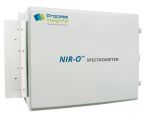
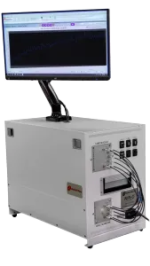
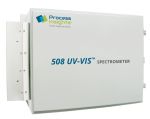
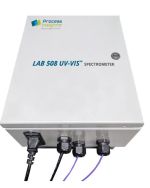
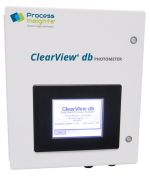
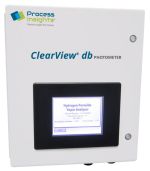
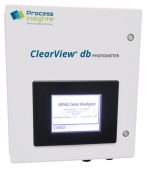
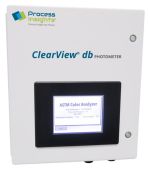
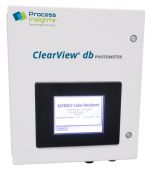
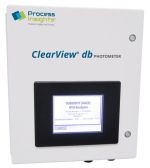
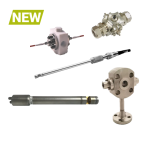
![NIR UV VIS APPLICATION QUESTIONNAIRE]](/wp-content/themes/yootheme/cache/d4/NIR-UV-VIS-APPLICATION-QUESTIONNAIRE-d40f8301.png)

